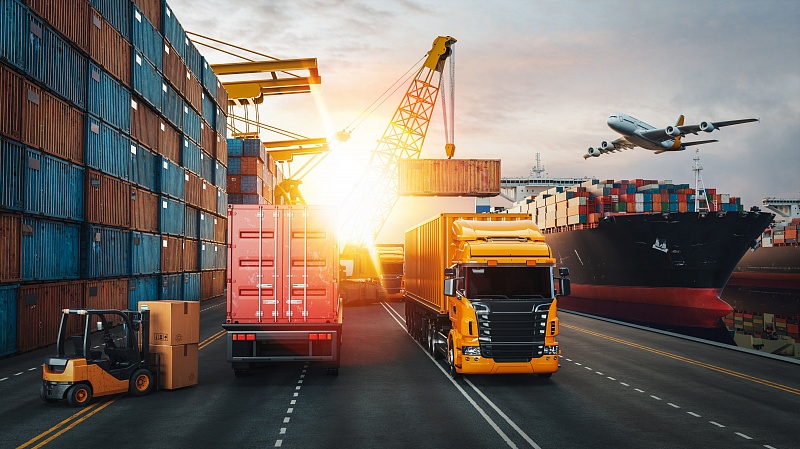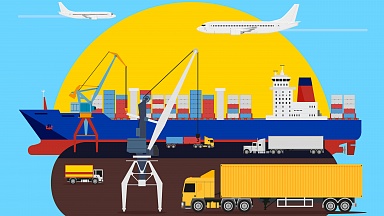A «robust» global air cargo market has virtually completed its recovery to pre-Covid volume levels inside 10 months, according to airline performance data for February 2021 from industry analysts CLIVE Data Services and TAC Index.
For the four weeks of last month, chargeable weight stood at just −1% compared to February 2019 and was 2% ahead of the same month of 2020.
Capacity in February 2021 was −8% and −5% versus 2019 and 2020 levels respectively, while CLIVE’s ‘dynamic loadfactor’ — calculated on both the volume and weight perspectives of cargo flown and capacity available — was up +5% pts on February 2019 and +9% pts on the same month of last year.
The overall dynamic load factor of 69% was at the same level as January 2021 while month-over-month volumes climbed 7%, despite February being three days shorter than January, as capacity rose 5% over January.
Higher prices
The volume, capacity and load factors continue to be reflected in higher prices, TAC Index said.
Robert Frei, Business Development Director at TAC Index, commented: «Volatility remains high (also intra-month) and, given the much higher pricing levels than a year ago, is having a major impact. Looking at PVG-EUR, for example, if you are 10% off with your procurement today (which would be RMB 3.20) compared to 2020 levels, it would have meant a deviation of 18%.
«This presents a very risky environment for freight forwarders and potentially an immediate loss on their gross margins of 8-10%. So up-to-date pricing information on a weekly basis is an absolute necessity to manage these volatile periods. We also assume the spread of spot rates is likely to remain high.»
The latest data from TAC Index shows that while the monthly pricing average seems ‘mundane’, weekly rate levels reveal a lot of volatility.
TAC Index says the Baltic Exchange Index in February was +2% over January, taking into account Chinese New Year starting February 12, which is normally considered peak season. But when looking at the CNY impact on the PVG-EUR lane, compared to previous years, in the two weeks prior/post CNY, TAC Index observed:
2019 — overall period +8%
2020 — overall period −4%
2021 — overall period −13%
February 2021 saw the largest drop in yield, compared to the last two years, during the four weeks around CNY. In absolute terms this period compares as follows:
2019 — average RMB 20 /kg
2020 — average RMB 17.5 /kg = −11% to previous year
2021 — average RMB 31 /kg = +79% to previous year or +63% higher than 2019
TAC Index adds that interesting observations can also be made when comparing PVG with HKG. On the HKG-EUR lane, rates were flat compared to PVG-EUR — which increased by +7%. HKG-USA rates went up +2%, whilst PVG-USA prices dropped by −1 %.
Niall van de Wouw, Managing Director of CLIVE Data Services, said: "These are tricky months to compare due to the Chinese New Year and Leap Year variances, so we have to be careful in how we read the market. To give a meaningful view, it makes senses to keep an eye out to 2019 before the pandemic took hold and, on that basis, air cargo demand is now nearly at par with pre-Covid volumes despite much less capacity in the market.
«If we normalize for last year’s Leap Year, we can see a 2% growth in global volumes compared to February 2020; but that does not tell the tale by any measure — the apparently modest global growth number is masking what lies underneath.
«Volumes from China to Europe, for example, were nearly 5x higher in the four weeks of February 2021 than in the similar weeks in 2020. This was caused by the dramatic drop in volumes because of the factory closures a year ago in response to the COVID outbreak. Volumes from Europe were down by −11% for the same period.»
He continued: «Demand is increasing and there are a lot of passenger planes sitting around that could start flying cargo, but I don’t think that will happen proactively. Given the high financial risks, when it comes to adding capacity, airlines are more likely to follow the market as opposed to trying to stimulate it.
«But, if it makes sense, they will surely fly those aircraft. Air cargo has been resilient and, bit-by-bit, has clawed back the losses we saw only a few months ago. In April 2020, volumes were down −39% but are now back to the pre-Covid level. Who would have thought that possible inside 10 months? It’s a recovery that airline passenger departments will be dreaming of.»
To give a meaningful perspective of the industry’s performance, CLIVE Data Services’ first-to-market data will focus on comparing the current state of the industry in the context of 2019 volume, capacity and load factor developments until at least Q3 of this year. This will be produced alongside the 2020 comparison.
.jpg)
IATA comparisons
The International Air Transport Association (IATA) this week also released January 2021 data for global air cargo markets showing that air cargo demand returned to pre-COVID levels (January 2019) for the first time since the onset of the crisis. January demand also showed strong month-to-month growth over December 2020 levels.
Because comparisons between 2021 and 2020 monthly results are distorted by the extraordinary impact of COVID-19, unless otherwise noted all comparisons to follow are to January 2019 which followed a normal demand pattern, IATA highlighted.
Global demand, measured in cargo tonne-kilometres (CTKs*), was up 1.1.% compared to January 2019 and +3% compared to December 2020. All regions saw month-on-month improvement in air cargo demand, and North America and Africa were the strongest performers.
The recovery in global capacity, measured in available cargo tonne-kilometres (ACTKs), was reversed owing to new capacity cuts on the passenger side. Capacity shrank 19.5% compared to January 2019 and fell 5% compared to December 2020, the first monthly decline since April 2020.
IATA said the operating backdrop remains supportive for air cargo volumes, noting:
"Conditions in the manufacturing sector remain robust despite new COVID-19 outbreaks that dragged down passenger demand. The global manufacturing Purchasing Managers’ Index (PMI) was at 53.5 in January. Results above 50 indicate manufacturing growth versus the prior month.
"The new export orders component of the manufacturing PMI — a leading indicator of air cargo demand— continued to point to further CTK improvement. However, the performance of the metric was less robust compared with Q42020 as COVID-19 resurgence negatively impacted export business in emerging markets. Should this continue or expand to other markers, it could weigh on future air cargo growth.
"The level of inventories remains relatively low compared to sales volumes. Historically, this has meant that businesses had to quickly refill their stocks, for which they also used air cargo services.
Alexandre de Juniac, IATA’s Director General and CEO, commented: «Air cargo traffic is back to pre-crisis levels and that is some much-needed good news for the global economy. But while there is a strong demand to ship goods, our ability is capped by the shortage of belly capacity normally provided by passenger aircraft.
«That should be a sign to governments that they need to share their plans for restart so that the industry has clarity in terms of how soon more capacity can be brought online. In normal times, a third of world trade by value moves by air. This high value commerce is vital to helping restore COVID damaged economies—not to mention the critical role air cargo is playing in distributing lifesaving vaccines that must continue for the foreseeable future.»





